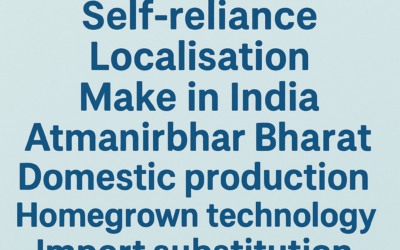Blog & Resources
How Indigenised Vibratory Feeder Controllers Are Replacing Imported Units
In India’s fast-evolving industrial landscape, one silent revolution is reshaping the way factories operate — the indigenisation of...
Indigenous Fire Alarm SMS Modules for Critical Infrastructure
In critical infrastructure environments—like power plants, defence facilities, metro stations, and chemical factories—response time...
Locally Engineered Electric Linear Actuators
In 2018, a mid-sized Indian factory manufacturing precision equipment was struggling with a recurring issue. Their imported pneumatic...
Indigenously Designed Vibratory Feeder Controllers for Maximum Efficiency
When Rajan, a production manager at a mid-sized automotive parts manufacturing unit in Pune, looked over the numbers from the last...
Indigenising Vibratory Feeder Controllers for Indian Automation
In a dusty industrial zone in Rajkot, Gujarat, a machine operator named Mehul struggled every morning with a common enemy: the...
Temperature controller in theFood Industry
User: Hi, I’ve heard about temperature controller, but I don’t really understand how they work. Can you explain them to me in simple...
Application of Alert Systems in Steel/Iron, Metal industry
In the steel/iron industry, alert systems ensure safety. Example: Sensors detect overheating in a furnace. If temperatures exceed...
Application of Cutting Machine Controller in Steel Industry
In today’s industrial landscape, precision, efficiency, and automation have become essential to meet the demands of high-quality...
Innovative Machine Tool Manufacturing with the Vibratory Feeder Controllers
Technical Specialist: Good morning! Welcome to our showroom. How can I assist you today? Client: Good morning! I’m looking to explore...
Latest Digital Inclinometer with Revolutionize Accuracy!
Digital inclinometers, often referred to as electronic inclinometers or digital protractors, are essential tools in a variety of...
Frequently Asked Questions & Popular Topics
What is indigenisation?
Indigenisation refers to a process in which a country’s economy is transferred from foreign control to local control. This often involves increasing the participation of indigenous people in the ownership and management of businesses and industries.
Why is indigenisation important?
Indigenisation is important because it can promote economic growth and development by ensuring that resources and wealth are more evenly distributed within a country. It can also help to reduce reliance on foreign investment and create opportunities for local entrepreneurs.
What are the challenges of indigenisation?
The challenges of indigenisation can include resistance from foreign investors and business owners, lack of local expertise and capital, and potential conflicts over land and resources. Additionally, it can be difficult to balance the interests of different stakeholders and ensure that the process is equitable and inclusive.
What are some examples of indigenisation policies?
Some examples of indigenisation policies include Zimbabwe’s Indigenisation and Economic Empowerment Act, which requires foreign-owned companies to cede at least 51% of their shares to local investors; Malaysia’s New Economic Policy, which aims to promote the economic participation of ethnic Malays; and Canada’s Aboriginal Procurement Initiative, which seeks to increase procurement from Indigenous-owned businesses.
How can indigenisation be implemented effectively?
Indigenisation can be implemented effectively through careful planning, consultation with stakeholders, and a focus on building local capacity and expertise. It is also important to ensure that the process is transparent, inclusive, and equitable, and that the interests of all stakeholders are taken into account.








